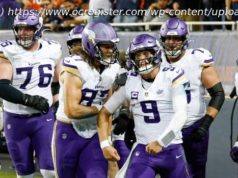The president’s patriotic pageant renews a question dating back to the first White House visit by a champion sports team.
Here’s the thing about the pilgrimages that championship sports teams make to the White House each year. It’s a tradition rooted in efforts to achieve national unity. Like the broader American project, at their best these visits promote an expansive vision of America, a diverse society finding commonality in shared symbols and common rituals.
But the first such visit was rooted in a very different vision of American society—uniting white Americans by excluding blacks from sports, from civic rituals, and from political equality. As President Trump disinvited the Philadelphia Eagles from the White House on Monday, he loudly insisted that he still wished “to honor our great country” and “celebrate America.” His statement did not specify, though, which version of America he intended to celebrate.
In 1865, the United States was engaged in the project of Reconstruction, building a new society in the wake of the Civil War. It was also engaged in playing ball. Union soldiers brought home with them a passion for the American game, and fans flocked to ballfields to enjoy the pleasures of peacetime.
Baseball teams proliferated. Black squads and white squads used the same fields in many cities, fans mingling freely. In Washington, the prime spot was the White Lot, on the grounds of the executive mansion. And in August, it hosted an extraordinary three-team tournament, pitting the Atlantic from Brooklyn and the Athletic from Philadelphia against Washington’s own Nationals.
These games took place against a backdrop of profound uncertainty. It remained unclear what form the reconstructed nation would take. A constitutional amendment abolishing slavery, ratified by the northern states, remained stalled—waiting for southern states to take it up. President Andrew Johnson, himself a southerner, was pushing for a rapid restoration of the Union as it was before the war. “The people must be trusted with their government,” he wrote the day of the first game. But he had a particular vision of what that meant. “This is a country for white men, and by G-d, so long as I am president, it shall be a government for white men,” he told the governor of Missouri, the Cincinnati Enquirer reported at the time.
The games riveted the federal city. The stands were generously sprinkled with the stars of general officers, and tinged blue with their staffs. Thousands of Washingtonians, and at least two members of the Cabinet, turned out to watch the Athletic trounce the hometown club, 87–12. The following day brought a crowd that may have numbered 20,000. The president, one participant later recalled, “permitted the government employees to suspend work and join the throng on the White Lot.” This time, the Nationals posted a more credible tally of 19 runs and kept their lead into the seventh inning. But, dear reader, it will surprise you not to learn that it was the Atlantic that prevailed—posting 22 runs in the final two frames. “The Atlantic Victorious,” proclaimed the next day’s paper.
The Athletic had made a visit to Congress and the White House before the tournament kicked off, but the president had not been available to meet with them. But on August 30, the host Nationals took the newly crowned champions to meet Andrew Johnson. One by one, the Atlantic players filed in, were introduced to the president, and shook his hand.
The last to be introduced was a reporter, not a player. The New York Times ’ Henry Chadwick—often described as the “Father of Baseball”—stepped forward. He urged Johnson to meet with another club set to visit the following month, for “such countenance of the game would give a national stamp to it.”
This, of course, was the whole point; national unity through baseball. The White House visit that day had been arranged by the ambitious young president of the National club, Arthur Pue Gorman. He was a political client of Johnson’s, who had arranged for his patronage appointment as postmaster of the Senate. Like Johnson, Gorman identified as a conservative, white southerner who favored restoring the Union as it had been, not trying to make it more perfect. He saw baseball as a tool to accomplish that goal; the White House visit he arranged provided a presidential imprimatur to that project.
In 1867, Gorman was elected president of the National Association of Base Ball Players, one of the sport’s first governing bodies. Gorman’s installation, the Ball Player’s Chronicle, was an effort to demonstrate that “sectional prejudices did not rule the fraternity of the North.” The installation of a white southerner was an explicit invitation, an effort to reconcile on southern terms, and to enshrine baseball as a national game—a game for a reunited nation. But if sectional prejudices did not rule baseball, it was because racial prejudices did.
It’s a story brilliantly recounted in Ryan Swanson’s When Baseball Went White. During Gorman’s tenure, the organization’s annual convention considered the question of race. “If colored clubs were admitted,” argued the NABBP’s secretary, “there would be in all probability some division of feeling, whereas, by excluding them no injury could result to anybody, and the possibility of any rupture being created on political grounds would be avoided.” Chadwick said the aim was to “keep out of the convention any subject having a political bearing, as this undoubtedly had.” The convention ratified a bar on any club with one or more persons of color—one of the nation’s very first Jim Crow rules. The galleries hissed, and an animated Gorman threatened to have them cleared.
To keep the game apolitical meant keeping it exclusionary; mollifying disagreements among white members required excluding blacks entirely. No injury could result to anybody, they argued, relegating the excluded to the status of nobodies.
Having done his part to segregate baseball, Gorman joined the effort to segregate the nation. He was elected to the U. S. Senate as a Bourbon Democrat, intent on rolling back the halting racial progress made during Reconstruction. “We have determined that this government was made by white men and shall be ruled by white men as long as the republic lasts,” he thundered, echoing his political mentor. He made his name opposing protections for black voters in the South, and with a major push to systematically disenfranchise black voters in Maryland.
American sports, meanwhile, would remain segregated for generations—as White House visits increased in frequency. And then, as courageous players like Jackie Robinson integrated America’s professional leagues, the White House visits began to take on a different layer of meaning.






